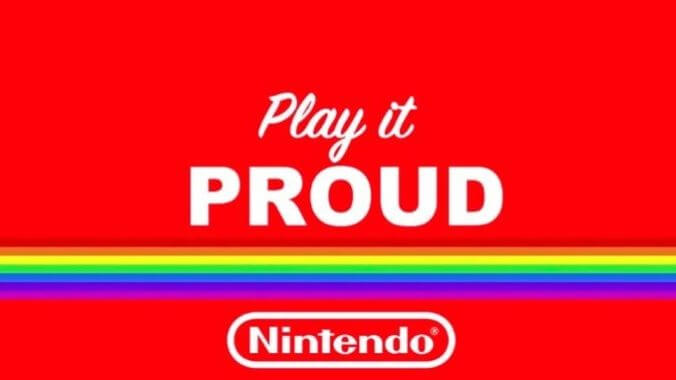Nintendo: A Queer Retrospective

A New Face
Future Redeemed, the DLC expansion for Nintendo Switch JRPG and frequent 2022 Game of the Year nominee Xenoblade Chronicles 3, is great for a lot of reasons. It’s got fun condensed RPG gameplay, oodles of well-executed fanservice, and a great story that brings a fitting finale to this era of the Xenoblade series, leading to it being one of the highest-reviewed game releases of the year so far. But one of the less talked-about aspects of the expansion is something that is unfortunately pretty rare for this type of game: good, and explicit, queer representation.
Future Redeemed introduces A (yes, that is their name), a mysterious swordfighter who serves as essentially the deuteragonist of the expansion’s storyline. A is a great character, highly intelligent and outwardly straight-faced with a streak of smartass sass that gives them a very fun dynamic with the lovably airheaded himbo protagonist Matthew. And beyond that, their constant air of mystery as they seem to know more than they let on and their apparent connection to the equally enigmatic Alvis, a character from the original Xenoblade Chronicles on Wii who returns as an antagonist in Future Redeemed, makes them consistently compelling to try and figure out.
And the icing on the cake of this well-written and layered character is that they are explicitly confirmed to be non-binary. About halfway through the game, returning Xenoblade Chronicles 2 protagonist Rex states on screen that, when it comes to gender, A “stand[s] somewhere between,” in a scene which queer fans of the series have already memed to hell and back. The English dub never refers to them by any pronouns whatsoever (so I’m using they/them to be safe), and in Japanese they frequently use the masculine pronoun “boku” despite a more traditionally feminine appearance. While there are unfortunately always going to be people who try to erase representation like this, in this case the situation is fairly clear.
I’d call this pretty good-quality representation too; their gender identity is explicitly confirmed and respected without being made the be-all end-all of their character, they get to play a central role in the entire expansion’s story, beginning to end, and they don’t lazily conform to stereotypes. All in all, it’s some of the most surprisingly good queer representation I’ve seen in a AAA game in a good while.
A Rocky History
I say “surprisingly good” because Nintendo, the game’s publisher, has historically had a very mixed track record when it comes to implementing queer characters into their games. To set the bar for what I’m talking about, the first-ever appearance of an explicitly queer character in a Nintendo-published game was in 1988’s Super Mario Bros. 2, with a transfem miniboss in the game. Here’s how the game’s manual introduces her:
“He thinks he is a girl and he spits eggs from his mouth. He’d rather be called ‘Birdetta.’”
An uncomfortable start to the history of queer portrayals by one of the biggest game companies in the world. Thankfully, as time has gone on, Nintendo has dropped the “he thinks he is a girl” line and pretty universally gendered Birdo as female, even directly addressing the issue (though perhaps not in the most tasteful manner) in the Japan-exclusive game Captain Rainbow, but this has been far from the only misstep throughout the company’s history.
In terms of games developed in-house at Nintendo’s internal studios, now known as Nintendo EPD, Birdo is pretty much where the story ends as far as *explicit* queer representation goes. While there is much to be said about the often non-traditional ways Nintendo portrays gender in games like The Legend of Zelda, I’d argue that’s a discussion of its own. Queerness, as we understand it, is not really something EPD-developed games like to explore in-depth, and while this can be a good thing, for instance in things like the casual acceptance of some gender non-conformity in The Legend of Zelda: Breath of the Wild, it can also lead to some very disappointing erasure. As recently as 2014, Nintendo’s life sim Tomodachi Life faced some fairly common criticism for disappointingly not allowing gay relationships between its Miis, something which by this point was already pretty much industry standard for the life sim genre. For a more robust history, we have to look to Nintendo’s external first party developers, especially Intelligent Systems and, more recently, Monolith Software.
The Other Guys